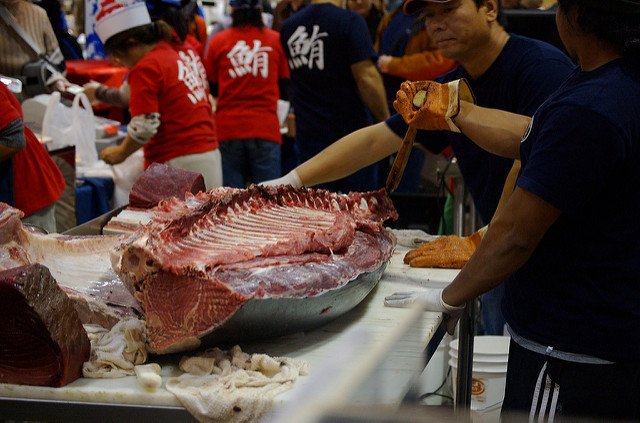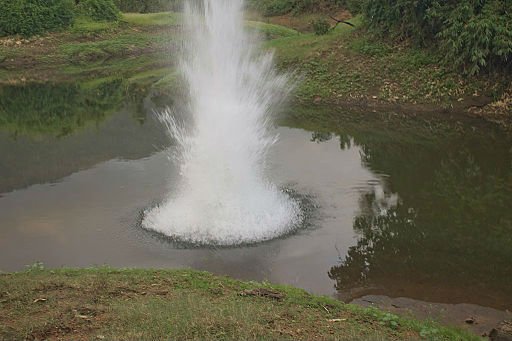What is the issue with overfishing? Today, fish are a significant source of protein, income, and livelihood for millions living in or on the edge of poverty in vulnerable coastal communities. There are two things that need to happen in order to protect these people, and sustain the world’s fish population. People need to stop eating unsustainable seafood, or at least learn about the dangers, and honestly quite terrifying reality, of overfishing on a global scale; and governments, international organizations and NGOs need to start implementing and enforcing strict laws on fishing practices and quotas.
It seems everyone loves fish. In fact global consumption of fish has massively increased in recent decades. So much so that the world’s oceans may run out of seafood supplies in about 32 years.
Have you heard the recent buzz that millennials drink 42 percent of the world’s wine? Well, there’s another thing millennials love. Sushi. Betches--a mildly offensive blog even quotes sushi as being the wine of food. But it’s not just millennials getting their fill of fish.
So what the heck is going on behind the world’s love for fish? Let’s dive deeper into what the global fisheries of the world look like and why protecting oceans from overfishing is so important to feeding the world.
Here are eight concepts to better understand what overfishing means and looks like in today’s oceans and fisheries.
1) What is overfishing?

Overfishing occurs when humans take fish from the marine and freshwater sources at a rate faster than fish can repopulate.
It’s the reason seafood is expected to be depleted from the oceans by 2048.
Overfishing is a result of modern advancements in the fishing industry, prior to techniques such as trawling, dredging, etc. the ocean appeared to be a limitless bounty of fish.
2) What is bycatch?
Bycatch is any catch that is either unused or unmanaged. Bycatch covers all marine life pulled up that is not able to be immediately sold on the global market. This means when undesirable marine life is, it’s often thrown back into the ocean - with little to regard to the creatures actually surviving. Unmanaged catch refers to species where no law or process for sustaining that species is documented.
Despite advances in fishing technology, bycatch from global fishing production increased by over 2 billion tonnes.
Overconsumption, mislabeling, unsustainable practices all contribute to increasing biomass of bycatch. You can help by checking labels and knowing which types of seafood produce the most bycatch.
Check out this comprehensive guide from FishChoice to learn more about which fish and shellfish options are sustainable.
3) What species of fish are most at risk?

With rising ocean temperatures due to global warming and ocean acidification, many species are threatened. But when it comes to overfishing, humans are doing more damage to some fish more than others.
Overfishing caused the global Bluefin Tuna population to decline by 96 percent in the last century. 80 percent of the “big tuna” is consumed in Japan, and even with regulations the species is facing extinction.
Species most affected by unsustainable fishing practices are those with slow reproduction rates. The problem here is that many of the harmful fishing methods mentioned previously, don’t discriminate between juvenile fish and adult. So the amount of marine species left to repopulate is dwindling. This is the major problem for cod fish in North Sea according to this article.
4) What types of fishing are harmful?
If you’ve seen the film Finding Nemo and remember the scene where all the fish have to swim down to break the net they are captured inside - then you have an idea of what’s not good for fish. The more realistic version of this type of fishing is called purse seine fishing. It’s used to catch sardines, anchovies, mackerel, tuna (some species), herring and other fish that travel in schools. Surprisingly, purse seine fishing is often not as bad as it looks.
Purse seine fishing can be harmful when a device such as a float is used to attract even more fish. The reason for this goes back to bycatch. Using an attraction brings in more outside marine species and leads to higher undesired fish being caught. This is wasteful and harmful to conserving ocean life. However, contrary to the trauma Nemo and friends endured, purse seine can be more sustainable than other methods.
The four majors harmful practices are:
-Bottom trawling
This type of fishing drags a net across the bottom of the ocean drudging up any living marine creatures to the top. It’s damaging to ocean floor ecosystems, and produces the highest amount of bycatch.
-Blast fishing

Still a practice in parts of the Philippines, this technique uses poison and explosives to catch fish. It can catch a lot of fish at once but at a high cost to consumers, and the environment. While illegal in most places, it can be hard to enforce and teach remote communities to discontinue this practice.
- Gill netting
There is a solution to make this practice more sustainable so larger marine life species do not get caught in nets and suffocate such as adding “bingers” to alert larger marine species, and setting nets lower as mentioned in the video above. Also, passing laws to make this technology required and affordable could improve this practice.
-Dredging
This creates similar damage to bottom trawling. Both practices can harm coral reefs which take thousands of years to grow and replenish.
For more information on types of fishing practices you can learn more here.
5) How much fish is caught and consumed each year?
Consumption of the world’s fisheries increased from 60 million tonnes in 1976 to over 150 million tonnes in 2012. That’s more than double the amount of fish caught for global consumption in just a few decades.
In terms of per person fish consumption per year this translates to 10 kg or 22 lbs!
The US and Japan are the biggest importers of fish, purchasing $35 billion USD worth of the world’s fishy products. China pays less, importing 13 percent of the world’s fish and paying $7 billion USD. China is also the largest exporter, shipping out 15 percent of the world’s fish.
What is the world eating the most of?
In this order: shrimp, salmon, groundfish, tuna, squid, cuttlefish, octopus, and fish oil.
In 2011, 29 percent of all the ocean’s fish stocks (which includes nearly 2,000 species of consumed marine species) were estimated to be overfished by the FAO.
6) What communities are at risk for losing fishing as a livelihood?
A lot! There are vulnerable regions around the world where fishermen and women survive on making a living fishing as well as the protein fish provides for their tables.
Fortunately, there are programs and projects around the world working to make fishing sustainable, and pass legislation to end harmful overfishing practices.
Check out these programs from Blue Marine Foundation to learn more.
7) Why does the world need strict international laws and quotas on fishing?
Have you heard of the tragedy of the commons? It’s a case used in economic theory where “the people” are given a space of land to be used as common land. The theory is that human behavior dictates society will take and take from shared resources until the land is completely used up. What happens in the example based on sheep and a shared pasture is the land is grazed to the point where soil degradation makes the land unusable.
The tragedy of the commons is pretty accurate for problems on land and the ocean.
Right now, too many parts of the ocean go unregulated, and unmanaged. This means humanity continues to take and take rather than maintain or replenish.
The open, and relatively unpatrolled, nature of the open oceans mean laws cannot be enforced by one country. To truly protect oceans all countries must abide by a common set of laws or some countries will continue to take and deplete the oceans even as others tries to protect them.
The oceans belong to everyone and it’s everyone’s responsibility to protect them. That’s why quotas, enforced international laws, more research on the world’s fisheries, and decreasing seafood consumption all should take place now.
8) What can you do?
You can help protect the world’s oceans by consuming less seafood, and checking your labels when you do (I know sushi is the best food group) but if the world wants to sustain its oceans fish consumers should remember the impact of their choices add up and make a big difference.
Global Goal 14: Life below water reminds us “fish are friends, not food.” Ok, they can be food too but let’s treat them as friends first. If the world continues at the current rate it will be a world without fish. It’s up to global citizens to care for and conserve life in water. You can do this by taking action and telling world leaders to put in place laws to protect the world’s fisheries.